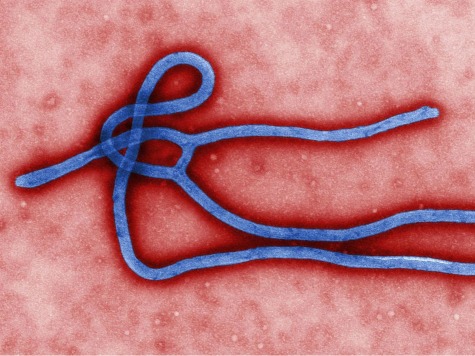
Dr. Michael Osterholm, director of the Center for the Infectious Disease Research and Policy at the University of Minnesota, said Ebola is only transmitted though direct contact with bodily fluids, but he is worried it could evolve. This means there is a slight possibility it could be transferred through a cough or a sneeze.
“It’s the single greatest concern I’ve ever had in my 40-year public health career,” he said. “I can’t imagine anything in my career — and this includes HIV — that would be more devastating to the world than a respiratory transmissible Ebola virus.”
Ebola is an RNA virus. The ribonucleic acid is its genetic material. Other RNA viruses include SARS, the flu, common cold, and polio. The more Ebola is transmitted the more opportunities it has to mutate in order to survive. Every time the disease “copies itself, it makes one or two mutations.”
“Imagine every time you copy an essay, you change a word or two,” said Dr. C.J. Peters. “Eventually, it’s going to change the meaning of the essay.”
The Virology Blog illustrates when the “nucleic acid polymerases insert incorrect nucleotides during chain elongation.” This is what allows the viruses to evolve and mutate. The blog said the “viruses are so successful because they make a lot of mistakes.” The constant replication makes it hard for doctors to develop vaccines for these diseases. From The Virology Blog:
But the RNA polymerases of RNA viruses are the kings of errors – these enzymes screw up as often as one time for every 1,000 – 100,000 nucleotides polymerized. This high rate of mutation comes from the lack of proofreading ability in RNA polymerases. These enzymes make mistakes, but they can’t correct them. Therefore the mutations remain in the newly synthesized RNA.
Given a typical RNA viral genome of 10,000 bases, a mutation frequency of 1 in 10,000 corresponds to an average of 1 mutation in every replicated genome. If a single cell infected with poliovirus produces 10,000 new virus particles, this error rate means that in theory, about 10,000 new viral mutants have been produced. This enormous mutation rate explains why RNA viruses evolve so readily. For example, it is the driving force behind influenza viral antigenic drift.
Here is a stunning example of the consequences of RNA polymerase error rates. Tens of millions of humans are infected with HIV-1, and every infected person produces billions of viral genomes per day, each with one mutation. Over 1016 genomes are produced daily on the entire planet. As a consequence, thousands of mutants arise by chance every day that are resistant to every combination of antiviral compounds in use or in development.
There are over 7,000 Ebola cases worldwide and 3,300 deaths. The World Health Organization said it is spreading faster now than at the beginning of the outbreak in February.
However, other experts said it is a possibility, but very unlikely Ebola will ever be an airborne disease. None can finger a disease that went from non-airborne to airborne in humans.
“We have so many problems with Ebola, let’s not make another one that, of course, is theoretically possible but is pretty way down on the list of likely issues,” said William Schaffner, an infectious diseases expert at Vanderbilt University. “Everything that is happening now can easily be comprehensively explained by person-to-person spread via body contact. We don’t have to invoke anything else.”
He continued: “The difficulty is that those [flu] viruses don’t have the protein attachments that can actually attach to cells in the upper airway. They have to develop attachments to do that. Since the virus doesn’t have attachment factors that can work in the upper airway, it’s very rare for it to go human to human, and then it almost always stops and doesn’t get to a third person.”

COMMENTS
Please let us know if you're having issues with commenting.